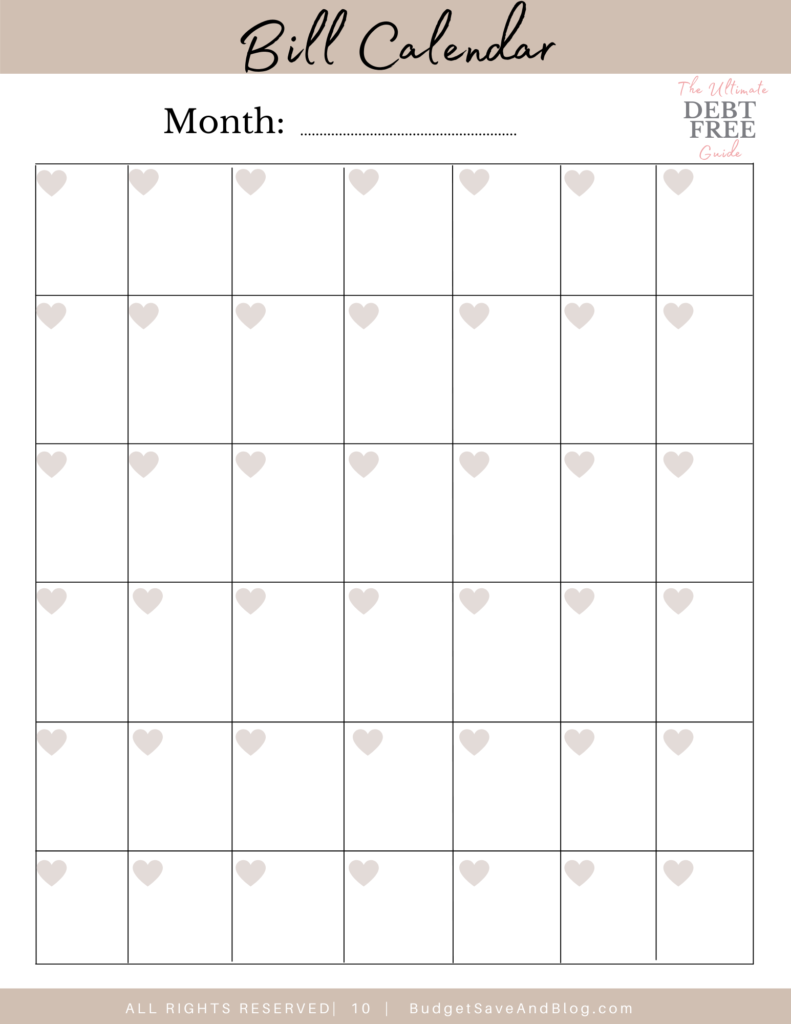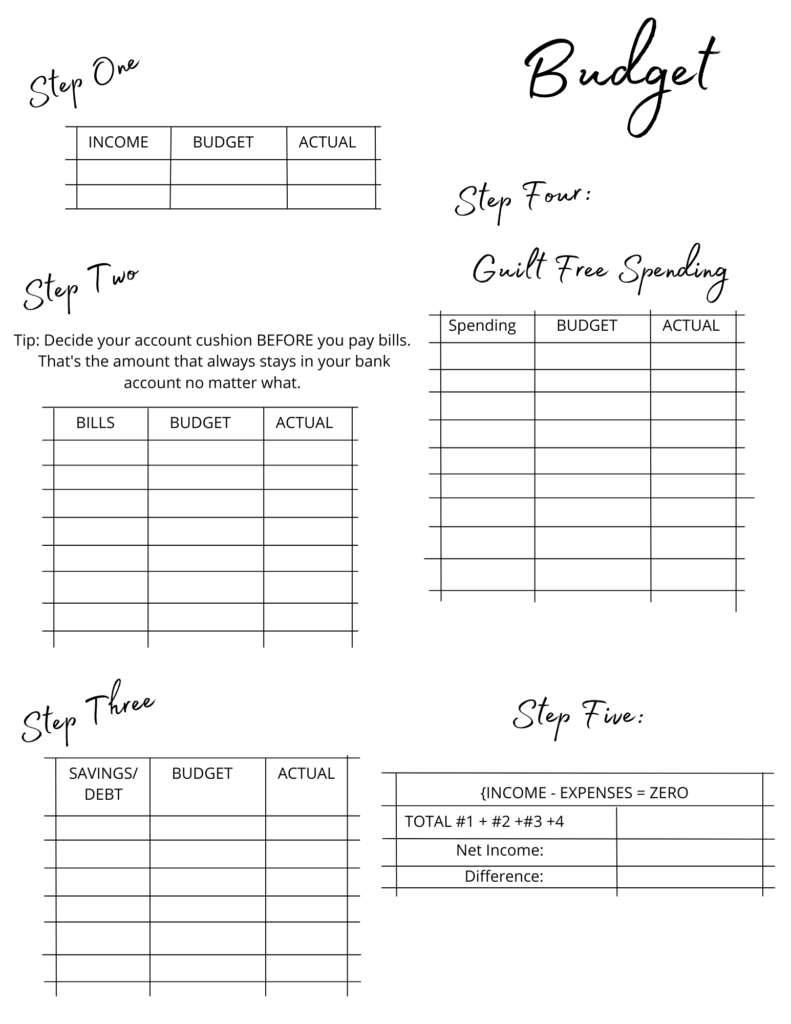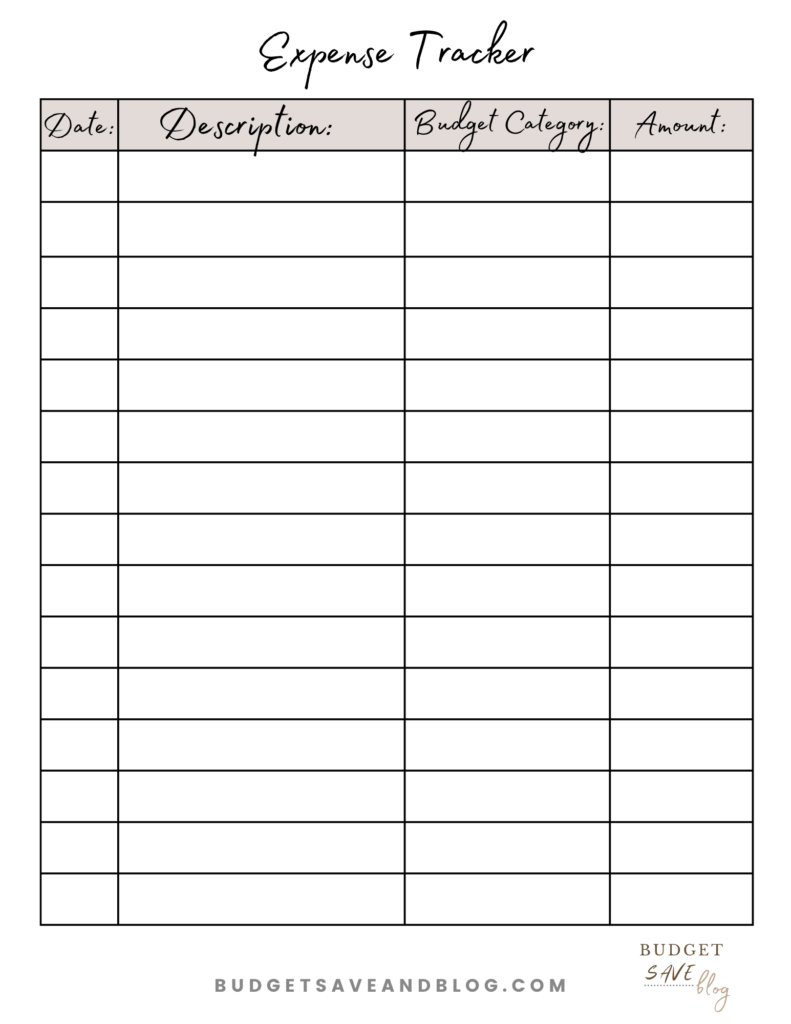How to budget
Want to learn how to budget but not sure where to begin? This comprehensive guide will walk you through setting up your first budget in 5 easy steps!
If you are reading this post, chances are you need advice on how to budget. And you’re probably feeling really overwhelmed like my friend Kathy.
She says: “I’m a 28 years old and completely utterly 100% financially illiterate. How do you even get to the point of starting to budget money. I find it very overwhelming. Where the heck do I start?”
If you are anything like Kathy, and have no idea how to budget money…
You’ve come to the right place!
This post will walk you through how to write your first budget. I will help you figure out exactly what to write and how to organize your money, so you can reach your goals faster.
My goal is to take out the mystery out of budgeting money so that you feel less intimidated and more empowered to take action. But make no mistake–budgeting finances takes work. You have to be willing to commit and tweak your budget as life happens outside of your budget.
Are you ready to get started?
Let’s do this!
How to Budget Money for Beginners In 5 Easy Steps:
In this personal finance post, you’ll learn:
- Step One: Find your WHY
- Step Two: Write down your fixed expenses
- Step Three: Create your first budget
- Step Four: Track and adjust
- Step Five: Do the work!
Do this First: Determine Your Why
Without being clear on why you want to start budgeting, you won’t be able to make any progress. Figuring out how to budget is east, it’s just sticking to it that’s hard.
If you are anything like me, you’re probably afraid of commitment. Afraid of failing. Afraid of writing down actual amounts and following it through with your money plan.
Or maybe you’re more like Ann…
She writes, “I want to have a budget, but I’m struggling. When I start to write things I get stressed about due dates and amounts. I know that Mind-budgeting isn’t working I need A plan.”
You know why she’s struggling? Because she doesn’t have a clear WHY. If she did she would stop mind-budgeting or guesstimating how far you can stretch your paycheck.
Maybe you want to be more like smart Sally…
Sally writes “I wasn’t separating my money or budgeting anything, but when I did, I realized how quickly I can pay off my car and be completely debt free.”
See the difference between Sally and Ann?
Smart Sally had a big enough reason why she wanted to budget. She said she wanted to pay off her car and be completely debt free. So she honed in on that and learned how to budget.
Do you have a big enough WHY? If not, take a few minutes to discover your why.
Step Two: Create A Budget Calendar
I’m sure you’re hoping to create a wonderful budget that allows you to save some money. Because right now you’re living paycheck to paycheck. And you’re under A LOT of pressure and you may feel like you can’t get ahead.
Well, let me tell you that yes you can!
It doesn’t even matter how much you’re making , you can organize your money in a way that you can stop living check for check.
Even if your bills are the basic bills that you can’t get rid of.
It all starts with a budget calendar. Do you have one of those?

I know I didn’t! I wasn’t taught as a kid either about money. Because of my upbringing I have zero ‘learned control’ around spending less than I make.
That’s why I had to learn how to budget.
And so can you!
A budget calendar helps you see all the bills you have to pay in an entire month.
It helps you organize your recurring monthly expenses. If you have no idea when you pay your bills, look at your online checking account and look at your Bill Pay and determine when you paid your bills last month.
Write them down because you’ll have to pay them again next month. You will be surprised how predictable your budget becomes.
Step Three: Create Your First Budget.
Give your money some guidance. Plan before you get paid and adjust as you spend your money.
Creating a budget is that simple!
- Write down how much you think you’ll get paid (budget) then write down the actual amount you got paid
- List out ALL your bills that you’re hoping (budget) to cover with your paycheck. Then write the amount you actually paid on the right hand side (actual).
- Next, decide how much you want to send to debt or savings.
- Then use some of your money for guilt free spending. Create budget categories. Organize your money by divvying it up into budget categories. (Allocate some money to food, gas, account cushion, stuff I forgot, clothes, etc)
- Make sure you account for every dollar in your budget. It should equal zero. Add all totals and your budget should be your {income – expenses = zero}
{RELATED POST: Here’s exactly how to a zero-based budget}
Step Four: Track And Adjust
Ever wonder where your money goes? Every year after I filled out my taxes, I looked at the entire amount.
I was like whoah! Did I really earn that? Where did it go?
I had no idea where that money would go. It felt like the money went into a black hole. I never saw it again.
I was never taught how to handle money. Growing up if we had money, it was already needed for other things like groceries, gas, bills, etc.
I was taught that money would disappear if I didn’t use it, so I’d just spend it. No wonder I racked up over $78,000 of debt.
If I’m not careful, I can spend WAY more than what I make.
Here’s what’s helped me curve my spending. Writing every single expense that comes out of my checking account.
Tracking your expenses and adjusting your budget daily is the key to sticking to your budget. You can’t just write a budget and hope and pray it works.
There’s something about writing every single expense down, it helps you become more aware of your spending habits.
You’ll become more intentional about every purchase. If you’ve never tracked your expenses, try tracking your expenses for one week (without cutting anything out of your budget).
Looking at where your money goes for 1 week straight will give you some clarity. That way, you can see what you could adjust next time you get paid.
You can grab these budget spreadsheets HERE.
Step Five: Do the work!
This is the most crucial step, this is where magic happens!
You can start seeing progress as soon as you take full control of your money.
It’s nice to learn about budgeting and look at ALL the different ways you could go about creating a budget.
But you won’t be successful with your money, until you create your own spreadsheet.
Kathy had become stuck. She became overwhelmed and didn’t even start to budget.
She ignored her finances because she was afraid and confused to mess up her budget. Sadly, Kathy did not believe in herself. Overspending became a habit because she was so stressed at work.
Consequently, her debts have grown more than what she can handle.
Are you anything like Kathy?
I hope not!
If you want to get ahead, stop living paycheck to paycheck, and get out of debt, create a mini-budget.
I challenge you to create a budget for the next 5-7 days and organize your money in a way that aligns with you WHY. So you can have more peace of mind and believe that you can get ahead.
And don’t be afraid of work.
To summarize…
This post was all about how to budget in 5 easy steps.
To start a budget, write down your paycheck (income). Then, then fill out the Budget Calendar (aka. your bills) and expenses you plan to cover with your paycheck.
Fill out your expense tracker, writing EVERY expense down. Take about 10 minutes in the evening to write down where you spent money that day. Adjust and update your budget to accommodate any changes.
Subtract your income from your expenses. Use the bottom of the budget to subtract your income-expenses = zero. The primary goal is to develop a zero-based budget. Every dollar of income has a purpose and is being budgeted.
Tweak your budget and don’t give up. It may take several months before you feel comfortable with your spreadsheet.









Greetings! Very helpful advice within this article! It is the little changes that will make the most significant changes. Thanks a lot for sharing!
You’re welcome! Thank you for your kind words.